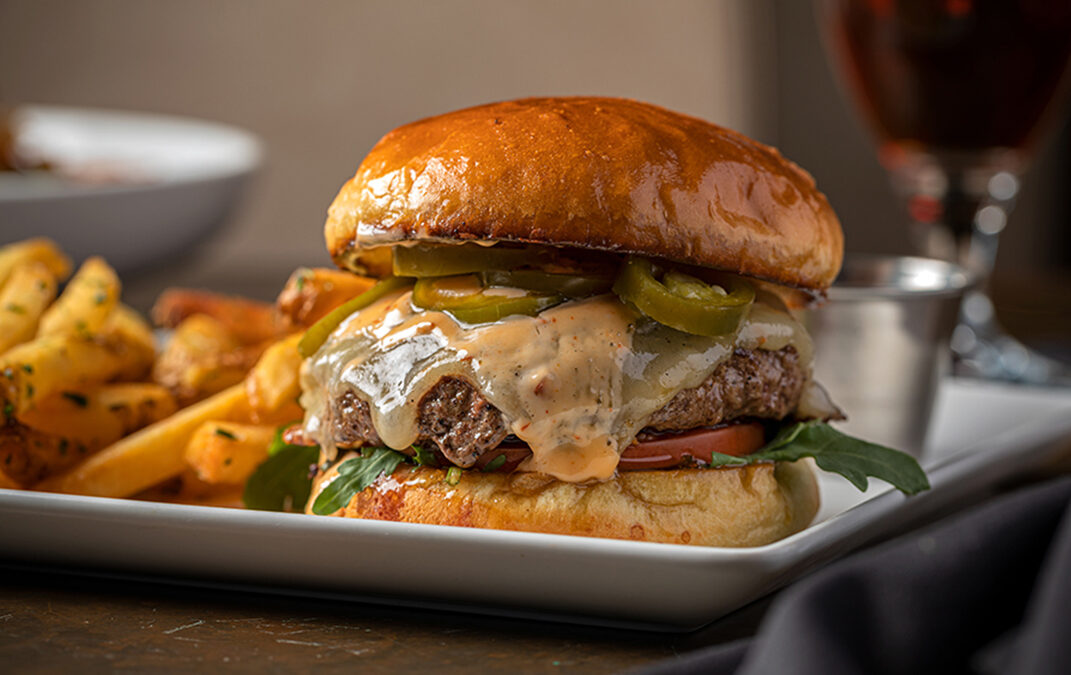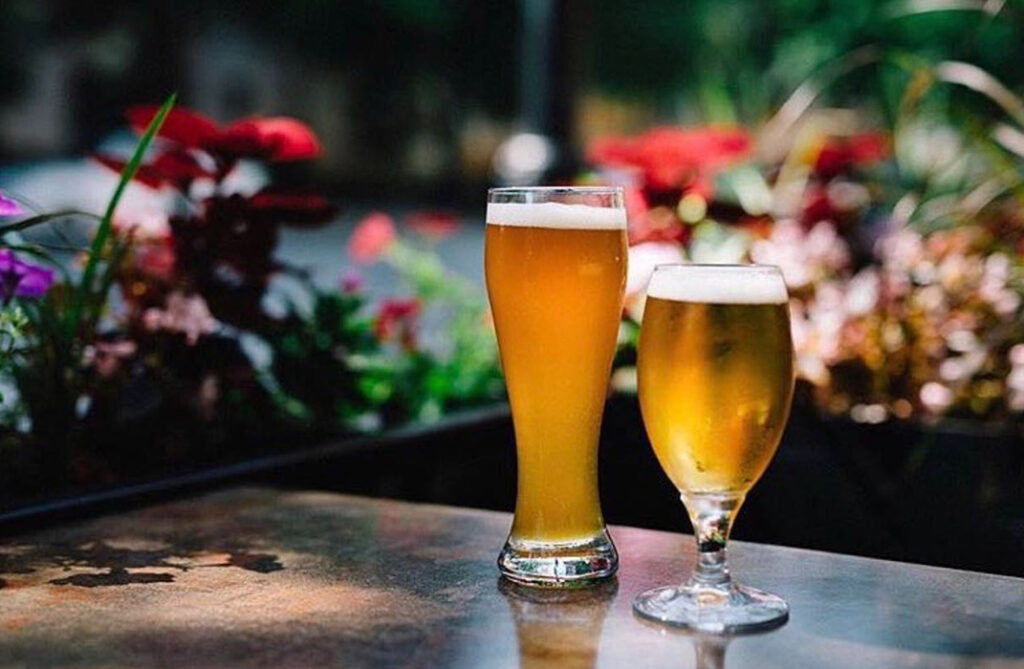Food Photography Tips for Beginners
Imagine a burger oozing with cheese and stacked with fresh veggies and crispy bacon. Your mouth waters just thinking about it, right? That’s the magic of food photography.
Whether you’re a foodie looking to up your Instagram game or a chef aiming to showcase your culinary creations, we have the key ingredients for excellent food photography and tips from our social media guru, Grace.
Lighting
Proper lighting is the secret sauce to delectable photos. Natural light is your best friend here. Position your dish near a window or outside during the golden hours (just after sunrise or before sunset) to get a soft, warm glow that highlights textures and colors. If you’re having a hard time avoiding harsh overhead lighting, consider investing in a diffuser or reflector to ensure your food is the star of the show.
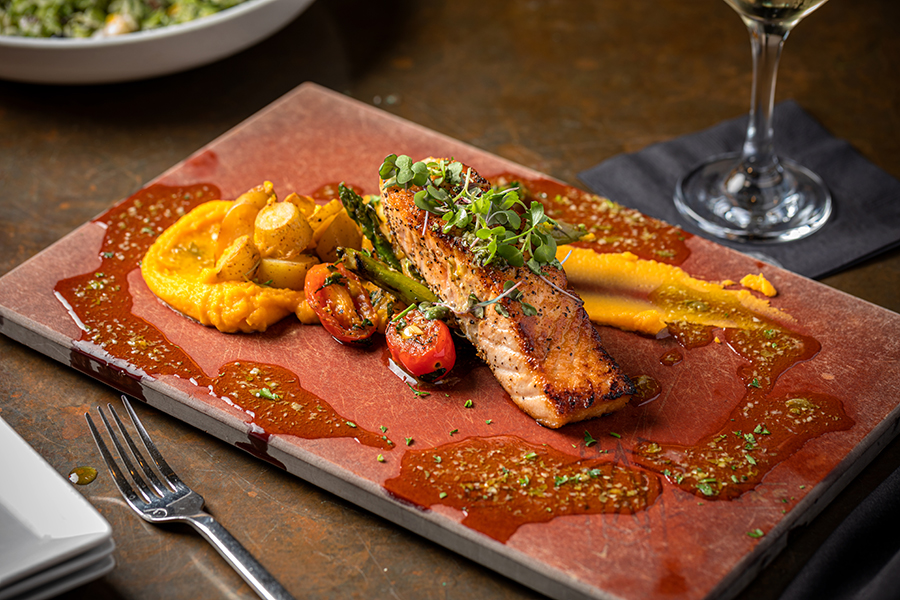
Pan-seared Salmon from City Works and Old Town Pour House.
Styling and Story-Telling
Behind every dish lies a story. Whether it’s a family recipe passed down through generations or a fusion of culinary cultures. Use your photography to tell that story and make people crave a bite. Let the ambiance and your choice of props, backgrounds, and table settings set the mood. Experiment with different utensils, napkins, and garnishes to add layers of visual interest. Try adding a sprig of fresh herbs here, and a sprinkle of powdered sugar there. Just remember the food should remain the star of the show so don’t overcrowd the frame with too many props.
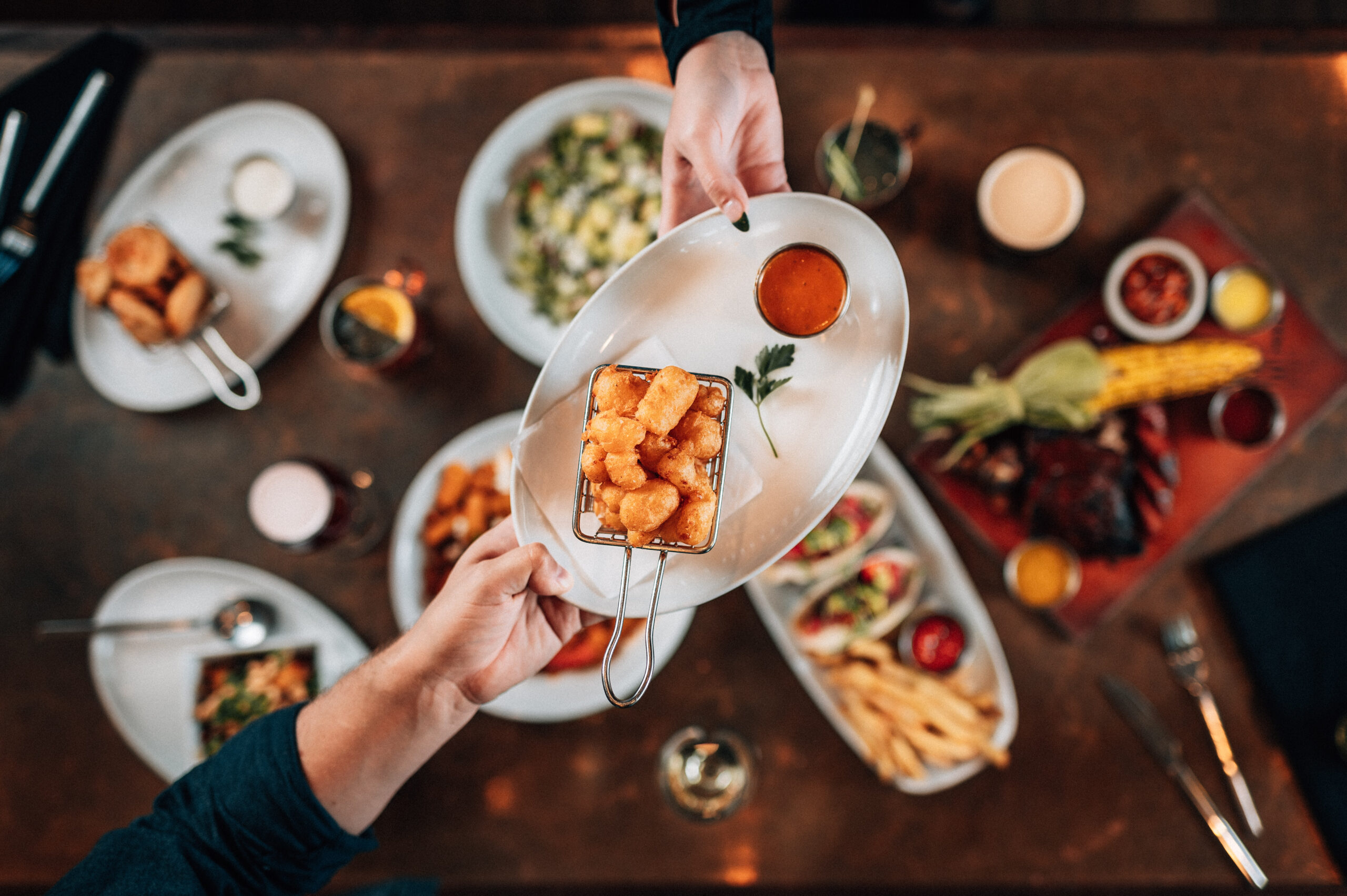
Cheese Curds from Bottleneck restaurants.
Composition
Place your dish slightly off-center to create a sense of visual interest. Experiment with angles like shooting from above for flatlays that showcase the whole spread or go for a close-up that captures the essence of each ingredient.
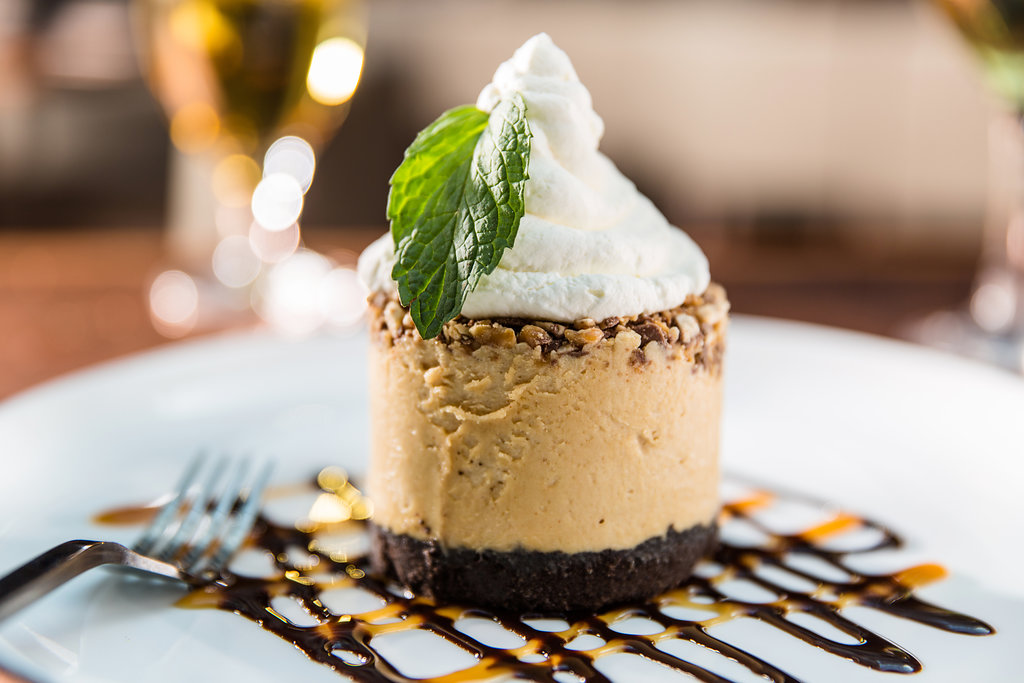
Snickers Pie from Bottleneck restaurants.
Focal Point
Every dish has an element that makes it stand out. It could be the melting cheese on a pizza or the delicate drizzle of chocolate on a dessert. Identify the element and make sure it takes center stage in your photograph.
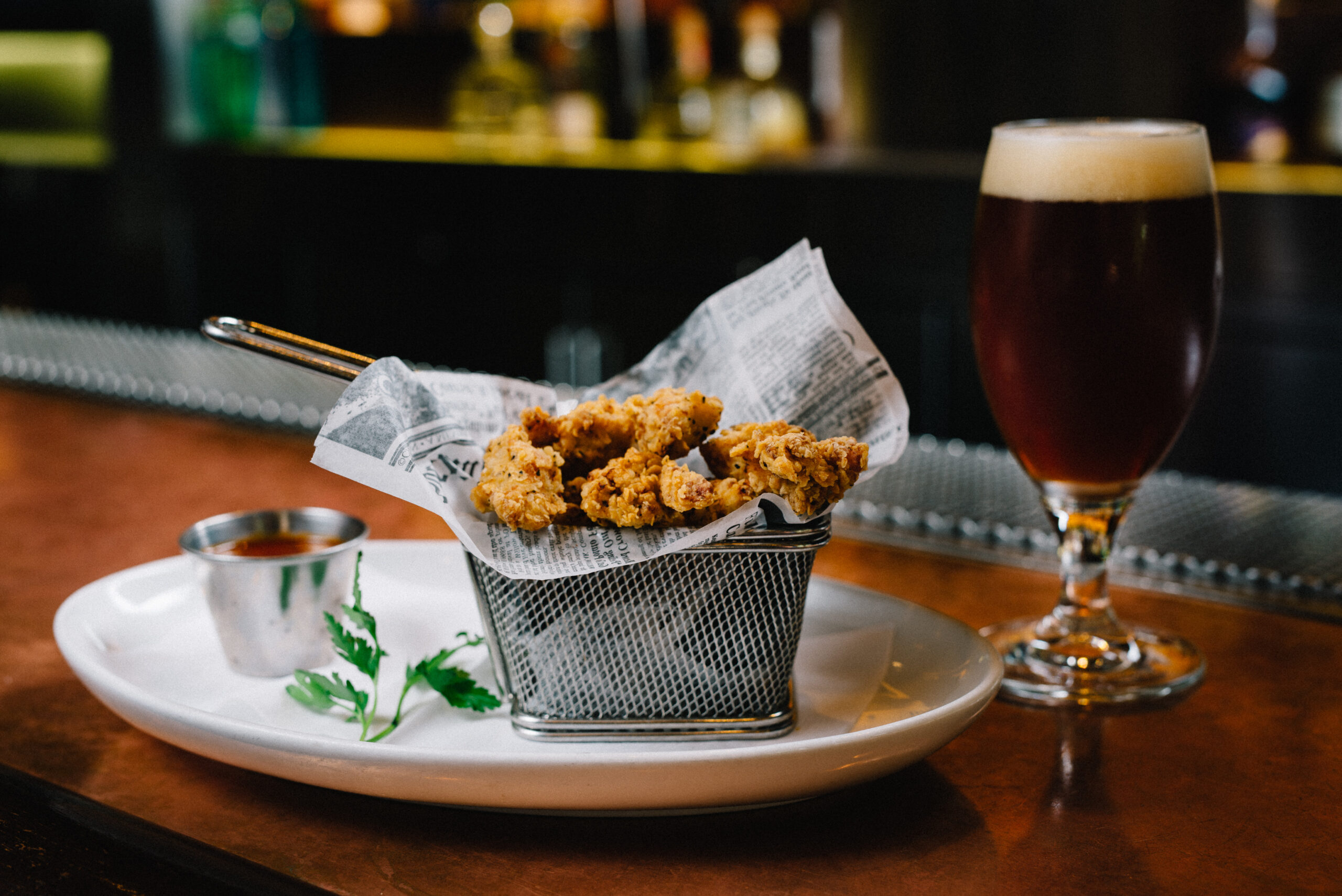
Popcorn Chicken for Bottleneck restaurants.
Editing
You can use software like Adobe Lightroom to fine-tune your exposure, contrast, and saturation to make the colors pop. However, moderation is key. Over-editing can leave your food looking more like a neon rainbow than a delicious dish.
Bonus Tips
- Photograph food when it’s hot and fresh. Several food items, like cheese, begin to look shriveled and not-so-appetizing if the photo isn’t taken while the food is fresh. Plus, fresh hot cheese makes for the best cheese pulls.
- Use a diffuser to truly take advantage of natural light by keeping it soft. A diffuser could be anything from an actual photography-purposed diffuser to parchment paper or a white bed sheet.
- Always take a lot of photos. If you feel like you have enough, double it. After the shoot, when you sit down to look at the photos, you may notice something you didn’t notice while on set and you’ll be thankful to have other options.
- If you’re using an iPhone, zoom in to 1.2x and lower the exposure slightly to help make the photo look more professional. Also, be sure to have the auto-edit setting off.
In the age of social media and visual storytelling, excellent food photography has the power to make your restaurant stand out. You can create images that not only make mouths water but also engage the senses and emotions of your audience.
Just as every chef has their signature dish, every food photographer develops their own unique style. Go capture those delicious moments and tag us on social media. Bon appétit and happy snapping!

